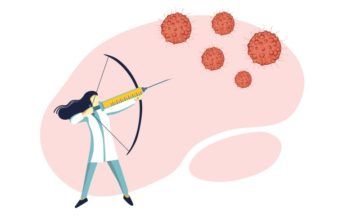Lina Zeldovich in Nautilus:
 Matthew Weiss dreams of the day when his oncology practice will operate very differently. A surgeon at the Northwell Health System in New York who treats pancreatic cancer—one of the deadliest malignancies known—he doesn’t have a lot of choices when it comes to saving his patients. Some people with pancreatic tumors die within a few weeks and others fight longer, but only 11 percent of them are still alive five years later.1 Current treatment options are limited. There are only two treatment paradigms, one based on a cocktail of two chemotherapy drugs and another one based on three, but doctors never know which one will work. “We may as well flip a coin when we decide which regimen to use,” says Weiss. “We have no way to predict who’s going to respond to what chemotherapy.”
Matthew Weiss dreams of the day when his oncology practice will operate very differently. A surgeon at the Northwell Health System in New York who treats pancreatic cancer—one of the deadliest malignancies known—he doesn’t have a lot of choices when it comes to saving his patients. Some people with pancreatic tumors die within a few weeks and others fight longer, but only 11 percent of them are still alive five years later.1 Current treatment options are limited. There are only two treatment paradigms, one based on a cocktail of two chemotherapy drugs and another one based on three, but doctors never know which one will work. “We may as well flip a coin when we decide which regimen to use,” says Weiss. “We have no way to predict who’s going to respond to what chemotherapy.”
Doctors can of course switch from one regimen to another if the initial performs poorly. But it takes a few months to determine whether tumors are shrinking or not, and patients don’t have that time. Moreover, the initial chemo may sicken some to the point that they are too weak to try the second approach. To make things worse, the incidences of pancreatic cancer, once considered rare, have increased in the past 20 years, now reaching over 60,000 cases annually in America alone.2 “About 1 in 50 to 60 people get it, and most of them don’t survive it,” says David Tuveson, cancer biologist at the Cold Spring Harbor Laboratory and director of CSHL’s Cancer Center. “It used to be rare, but it’s not anymore. It is now the third most common cancer, behind lung and colon, and predictions show that it’s going to take the number two spot soon.”
More here.
